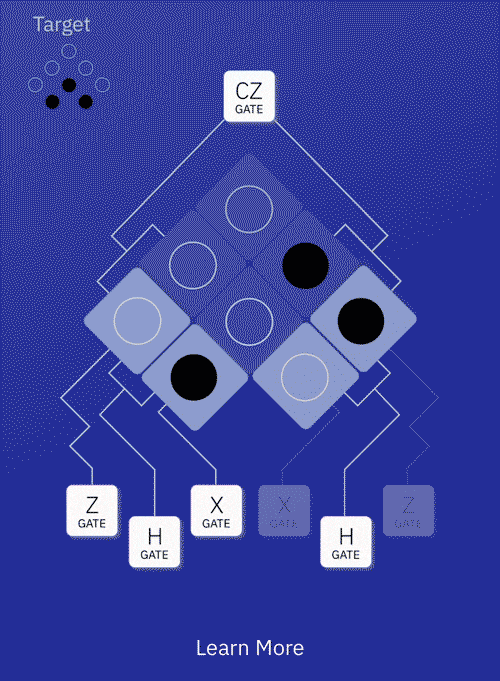#research and science
If Girls Can See It, They Can Be It.
Where can a great idea take you? Anywhere—especially when you’re a child with a boundless future ahead of you. Take IBM Master Inventor Lisa Deluca. Her first brush with invention occurred in second grade, when she prototyped an idea she had for a full-body umbrella. This sparked a rich future for Lisa, setting her down a path of invention that has culminated in over 400 patents, making her the most prolific female inventor in IBM history. Every child deserves the chance to encounter the same spark—especially girls, whose rich curiosity is often underserved due to lack of exposure to female role models in STEM careers. That’s why IBM is working with the Ad Council and four other major companies on the “She Can STEM” campaign. It encourages girls to get involved in science, technology, engineering and math by promoting the accomplishments of role models like Lisa. We’re encouraging every woman in a STEM career to post a picture of their younger self juxtaposed with their current picture, showing young girls that “If she can STEM, so can you.” IBM believes sparking girls’ futures starts with showing them that their great ideas can take them anywhere they’d like to go. Join the #SheCanSTEM conversation on social with leaders like Lisa today.
Learn more about She Can STEM ->
Post link
Hello Quantum serves up puzzles with a purpose
Can a puzzle game help make quantum computing less puzzling? Find out for yourself by playing Hello Quantum, a mobile game designed to teach introductory principles of quantum computing. Players can explore the building blocks of quantum mechanics through puzzles, then toggle between playing the game and exploring the IBM Q Experience. Quantum computing has always been fascinating, but Hello Quantum goes the distance to make it fun.
See if you have what it takes to master Hello Quantum ->
Post link
Get ready for healthy debate
Can AI expand a human mind? IBM Research is developing Project Debater, an AI technology that is capable of engaging in long-form discussion and providing impartial arguments on various topics that have no right or wrong answers. It can even rebut an opponent’s point of view. The goal? To help people make evidence-based decisions when the answers aren’t clear. Debate is a cornerstone of learning in our society; in a world full of echo chambers and filter bubbles, a technology that is designed to help people understand each other is an investment in a better future.
Learn more about Project Debater ->
Post link
IBM 5 in 5: Unbiased AI will help people trust machines
In the next five years, new solutions will be developed to help control bias in artificial intelligence. AI can be a powerful tool for helping people make decisions— for example, lawyers are using AI to help them conduct legal research and stay up to date with the latest legislation. But when AI is trained using biased data, the bias can be passed into the decision-making process—an issue requiring immediate attention as humans and AI increasingly work together. IBM researchers are developing new solutions to help remove implicit racial, gender, or ideological biases from data sets. Balanced data means balanced decision-making, building a future AI as intelligence we can trust.
See how we’re working to remove bias from AI within five years ->
Post link
IBM 5 in 5: Lattice Cryptography will outwit hackers
The scale and sophistication of cyber-attacks escalates every year. But within the next five years, a new security method called lattice cryptography will help create an intractable barrier for black hats. The key is hiding data inside complex math problems called lattices, designed to protect data from the threat of crypto-breaking quantum computers. Current encryption protocols are being outpaced by advances in computing technology, but with lattice cryptography, we’re working to get ahead of the problem. Hackers gonna hack—but we’re coming prepared.
See how lattice cryptography will future-proof data encryption within five years ->
Post link
IBM 5 in 5: AI-Powered robot microscopes will help save our oceans
Oceans are vast—and vastly complicated. They’re difficult to study, as even the most technologically advanced sensors struggle to analyze such a complex ecosystem. But over the next five years, IBM is working to tap the help of tiny little creatures—plankton—whose changes in behavior can point to hard-to-spot changes in the environment. IBM researchers are building a real-time network of autonomous microscopes that will monitor ocean plankton—the more data they collect, the better they’ll be able to predict threats like red tides. And in the future, AI technology can equip these microscopes to report abnormalities in real time. It’s a microscopic innovation with a massive effect.
See how AI microscopes will create a sea change for our oceans within five years ->
Post link
IBM 5 in 5: Blockchain and crypto-anchors will help knock out knockoffs.
In the next five years, cryptographic anchors and blockchain technology will help ensure a product’s authenticity—from its point of origin to the hands of the customer. Knockoffs aren’t always easy to spot, and it can be difficult to pinpoint when and where they are substituted for genuine items. Complex supply chains demand an immutable solution to keep counterfeits from replacing authentic products, goods, and medicines. IBM researchers are developing crypto-anchors are digital fingerprints that can authenticate a product’s origins and contents against records kept in a blockchain ledger, so you always know what you’re receiving. Knockoffs beware—your days are numbered.
See how crypto-anchors will protect supply chains within five years ->
Post link
IBM 5 in 5: Quantum computing will be mainstream
In the next five years, we expect the effects of quantum computing to reach beyond the research lab. Industries will begin to leverage quantum to work through what are currently perceived to be unsolvable problems, such as the development of personalized drugs or discovering more efficient and sustainable energy sources. As it proliferates into the mainstream, quantum will become a pre-requisite technology taught in science and engineering classrooms worldwide.
See how quantum computers will help change our lives within five years ->
Post link
The sounds of IBM Q
Quantum computers make a weird and wonderful noise. Why? The answer is a cool one—or, at least, it lies in the computer’s cooling process. To help keep IBM Q quantum computers running perfectly, they are kept at the ultra-cold temperature of 15 degrees milliKelvin. This process protects our qubits, but also generates a very distinct, pleasant whooh-ing tone – the sounds of IBM Q.
Quantum computing in real life
This is a quantum computer. While today’s classical computers have served society incredibly well, there are complex problems they haven’t fully solved––ranging from simulating the interactions of atoms to optimizing supply chains. Quantum computers forego the bits, or binary digits, of classical computing—the “1”s and “0”s––and instead use qubits, which enable them to perform calculations in a fundamentally different way. Qubits can exist in a superposition of “0” and “1”, allowing them to calculate more information. It’s an entirely new approach to computing that could help us solve these complex problems. The science has been advancing for decades, and now in the last few years quantum computing has started to become a reality.
Learn more about quantum computing in real life ->
Post link









